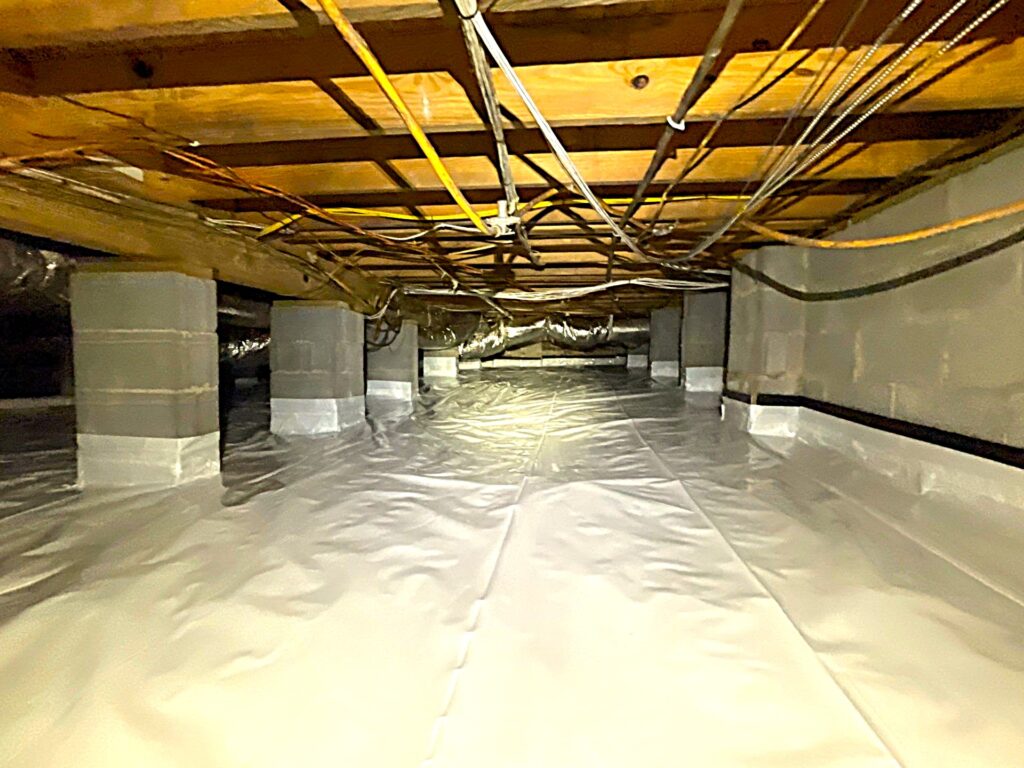
When you think about your home, you probably imagine the cozy living room, the inviting kitchen, or maybe even the roof over your head. But have you ever stopped to wonder what's beneath your feet? Just below that beautifully tiled floor or plush carpet lies a world that many homeowners rarely consider—a crawlspace. It's an often-overlooked part of your home, yet it plays a pivotal role in keeping everything above it safe, dry, and warm. So, what exactly is a crawlspace, and why should you care? Let’s dive into this hidden world.
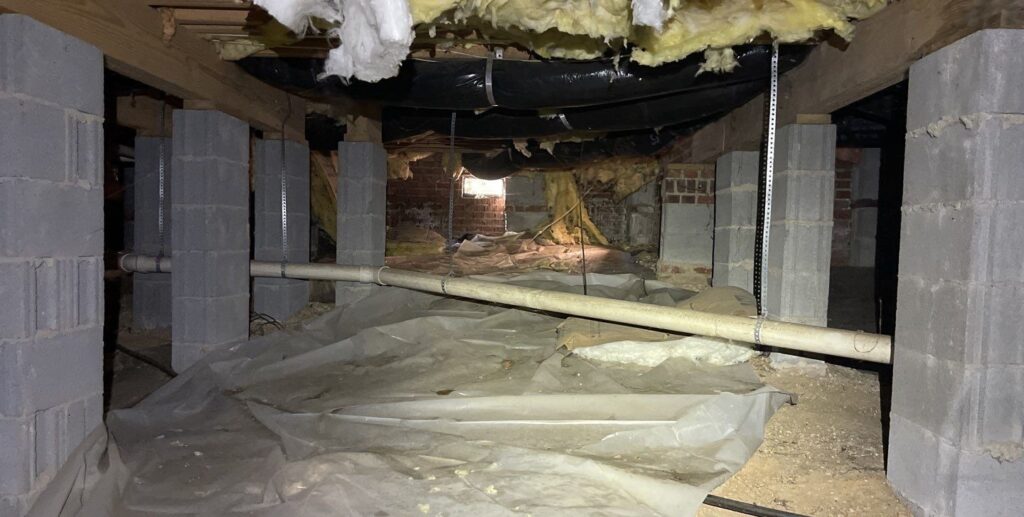
Picture this: a narrow, dimly lit space, just a few feet high, stretching beneath the entire first floor of your house. It’s not the kind of place you’d want to spend much time, but it’s essential to your home’s health and stability. A crawlspace is, quite literally, the space you’d have to crawl through to navigate it, hence the name. But don’t be fooled by its simplicity—this unassuming area does a lot more than just hold up your home.
Crawlspaces are designed to elevate your house off the ground, creating a buffer zone between the earth and the living spaces above. This elevation helps protect your home from the not-so-friendly elements lurking below, like moisture, pests, and even radon gas. But that’s just scratching the surface. Crawlspaces also provide a convenient (albeit cramped) location for your home’s plumbing, electrical wiring, and heating and cooling systems. Think of it as the behind-the-scenes area of a theater—the place where all the magic happens, but the audience (or in this case, you) rarely sees.
You might be wondering, "Why do some homes have crawlspaces while others have basements or slab foundations?" The answer lies in a combination of geography, climate, and practical necessity. In regions with high humidity or pesky pests like termites, crawlspaces offer a way to elevate the house and keep those unwanted guests at bay. In areas prone to flooding, a crawlspace can protect your home by lifting it above the waterline. And if your home is built on a slope or uneven terrain, a crawlspace can help level things out, providing a stable foundation without the need for expensive excavation.
But beyond these functional reasons, crawlspaces offer something that might surprise you—accessibility. Imagine trying to repair a leaky pipe or upgrade your home’s electrical system if everything were embedded in a concrete slab. It would be a nightmare! Crawlspaces make these tasks much easier, giving plumbers, electricians, and HVAC technicians the room they need to work without tearing up your floors.
You might think of your crawlspace as nothing more than a dark, unused space beneath your home, but it's actually a bustling hub of activity. It’s here that some of the most critical systems in your home quietly go about their business, ensuring that your daily life runs smoothly.
Many of the pipes that carry water into your home and wastewater out of it run through the crawlspace. This setup keeps them protected from the elements while still accessible for maintenance and repairs. However, this also means that any leaks or issues can quickly lead to moisture problems in the crawlspace if not addressed promptly. Regular inspections are key to catching small plumbing issues before they turn into costly repairs.
Your home’s heating, ventilation, and air conditioning (HVAC) system relies on a network of ducts that often run through the crawlspace. These ducts distribute conditioned air throughout your home, maintaining a comfortable temperature year-round. If your crawlspace isn't properly sealed or insulated, you could be losing valuable energy, leading to higher utility bills and less efficient heating and cooling. Ensuring that your ducts are in good condition and that the crawlspace is well-maintained can significantly impact your home’s energy efficiency.
The crawlspace also provides a convenient pathway for electrical wiring. This setup allows electricians to run wires under the house and connect to various outlets, lights, and appliances without needing to tear through walls or ceilings. However, exposed wiring in a damp or pest-infested crawlspace can pose significant risks, including electrical shorts or even fires. Keeping the crawlspace dry and free of pests is essential for protecting your home’s electrical systems.
In addition to plumbing, HVAC, and electrical systems, your crawlspace might also house gas lines, water heaters, or even sump pumps. Each of these components plays a critical role in your home's operation, and like the other systems, they benefit from a clean, dry, and well-maintained environment. Any malfunction or damage to these utilities can have serious consequences, making it all the more important to keep your crawlspace in good condition.
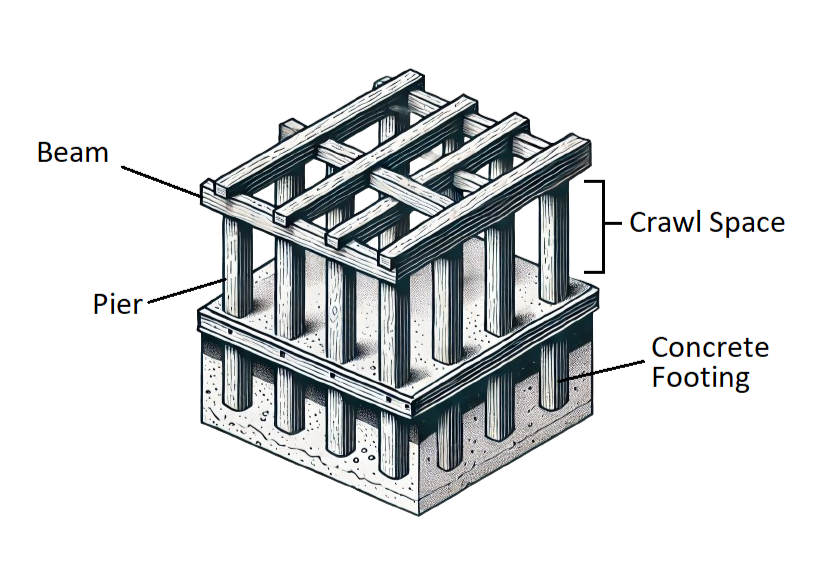
Building a crawlspace might seem straightforward, but it’s a delicate process that requires precision and care. Let’s take a journey through the steps of constructing this essential part of your home.
Before anything else, the land where your home will sit needs to be prepped. This involves clearing away any trees, rocks, or debris and grading the soil to ensure proper drainage. Think of it as setting the stage for the main event. The goal is to create a smooth, even surface where the crawlspace can be constructed, and this often means digging down a few feet to create enough space for the foundation.
Footings are like the roots of a tree—they anchor your home to the ground and provide stability. These concrete structures are poured directly into the ground, below the frost line, to prevent them from shifting during freeze-thaw cycles. The footings need to be strong and deep enough to support the weight of your entire house, so this step is critical to ensuring your home’s long-term stability.
Once the footings are in place, the next step is constructing the foundation walls and piers. The perimeter walls, typically made of poured concrete or cinder blocks, form the outer boundary of your crawlspace, providing critical support for the weight of the house above. These walls are essential for keeping out moisture, pests, and the harsh elements from entering your crawlspace.
In addition to the perimeter walls, piers are often installed at strategic points within the crawlspace. These vertical supports, made from concrete or masonry, provide additional stability for the floor joists, especially in larger homes or those with more complex floor plans. Piers help distribute the weight of the structure evenly across the foundation, reducing the risk of sagging floors and ensuring the long-term stability of your home. Together, the perimeter walls and piers create a robust foundation that supports both the structural integrity and the utility systems housed in your crawlspace.
A vapor barrier is a thick sheet of plastic that’s laid on the ground inside the crawlspace to prevent moisture from seeping up from the earth. This might not sound like a big deal, but trust me, it is. Without a vapor barrier, your crawlspace could become a damp, moldy mess, and that’s the last thing you want beneath your home. The vapor barrier helps keep things dry and protects your home from moisture-related issues like wood rot and mold.
With the foundation walls in place, it’s time to install the floor joists—these are the horizontal beams that span the width of the crawlspace and support the floors above. Once the joists are in, the subfloor is laid on top, creating the base for your home’s floors. This step seals off the crawlspace from the living areas above, helping to regulate temperature and keep your home energy-efficient.
Not all crawlspaces are created equal. Depending on where you live and the specific needs of your home, your crawlspace might look and function differently from your neighbor’s. Let’s explore the different types of crawlspaces and what makes each one unique.
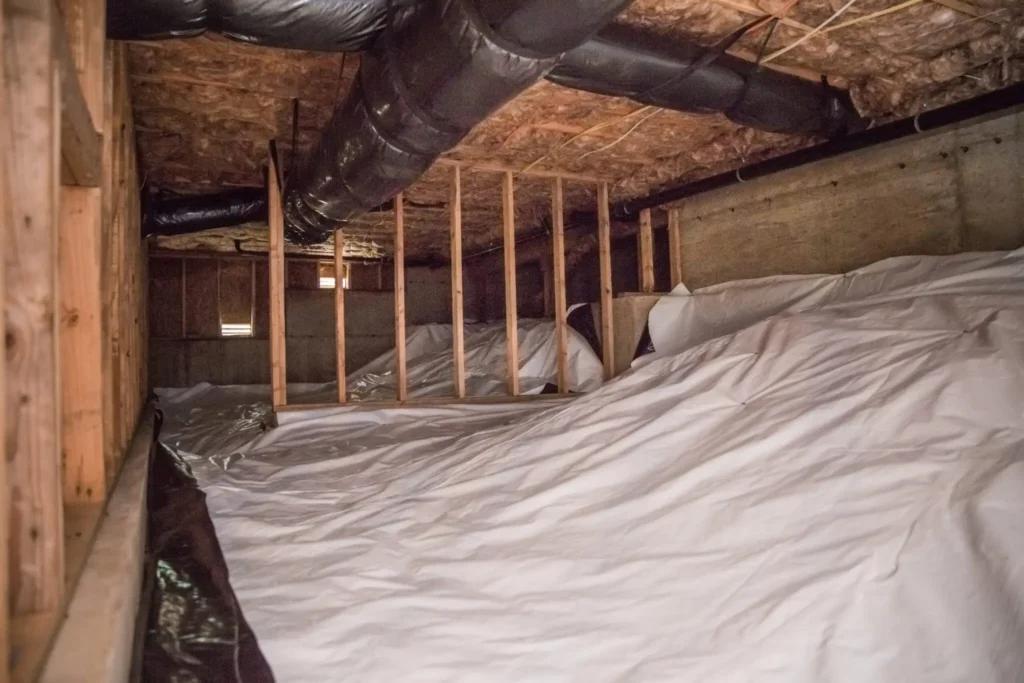
In warmer, more temperate climates, ventilated crawlspaces are the norm. These crawlspaces have vents built into the foundation walls that allow outside air to circulate through the space. The idea is that this airflow will help keep things dry and prevent mold growth. However, there’s a catch—if the air outside is humid (think summer in the South), those vents could actually be introducing moisture into the crawlspace, creating the very problem they’re meant to solve. It’s a bit of a double-edged sword, and it’s why some homeowners opt for alternative designs.
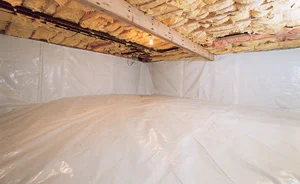
In contrast, unventilated crawlspaces are completely sealed off from the outside world. No vents, no drafts, just a controlled environment that relies on your home’s HVAC system to regulate temperature and humidity. This design is more common in colder climates, where ventilation could lead to energy loss and condensation issues. By keeping the crawlspace sealed, you reduce the risk of moisture problems and improve your home’s energy efficiency.
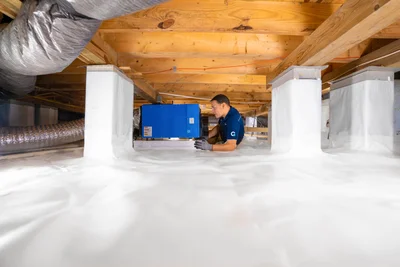
For homeowners who want the best of both worlds, conditioned crawlspaces offer an ideal solution. These crawlspaces are fully integrated into your home’s heating and cooling system, meaning they’re kept at the same temperature as the rest of your house. This not only prevents moisture issues but also makes your home more comfortable and energy-efficient. Plus, a conditioned crawlspace can help improve indoor air quality by reducing the entry of allergens and pollutants from the outside.
If you’ve never ventured into your crawlspace (and let’s be honest, most people haven’t), you might be surprised by what’s hiding down there. Crawlspaces are often dark, damp, and a bit spooky—perfect for creepy crawlies and other unwelcome guests. Rodents, insects, and even the occasional snake have been known to take up residence in crawlspaces, turning them into their own personal playground. And while that might sound like a nightmare, it’s a reality for many homeowners.
But it’s not just pests you need to worry about. Crawlspaces can also be a breeding ground for mold and mildew, especially if they’re not properly sealed or ventilated. This isn’t just an aesthetic issue—mold can pose serious health risks, particularly for people with allergies or respiratory conditions. That’s why regular crawlspace inspections and maintenance are so important. You never know what’s lurking below until you take a look!
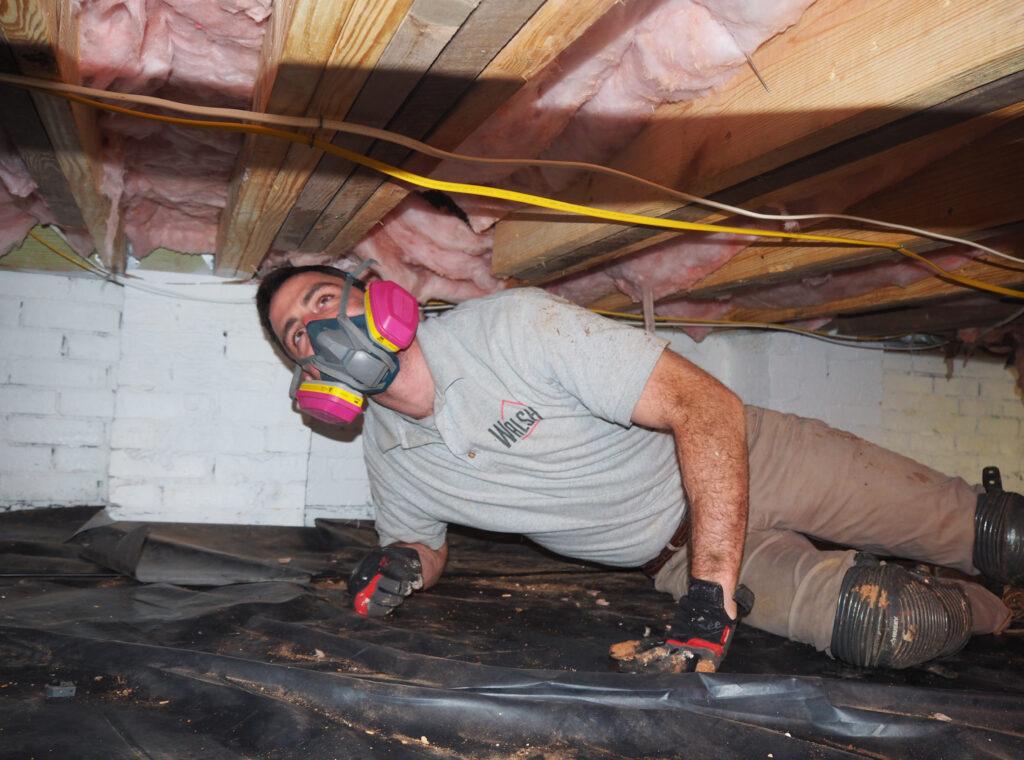
Okay, so you’ve got this space under your house that’s essential for your home’s health, but it’s also prone to all sorts of issues. How do you keep it in good shape? The key to a happy, healthy crawlspace is regular maintenance. Here’s how you can keep your crawlspace from becoming a horror story.
The first rule of crawlspace maintenance is to keep an eye on things. Twice a year, take a flashlight and do a thorough inspection of your crawlspace. Look for any signs of moisture, like water stains, damp insulation, or mold. Check for pests—look for droppings, nests, or chewed materials. And don’t forget to inspect the vapor barrier and insulation to make sure they’re intact and doing their job.
Moisture is the enemy of a healthy crawlspace. Make sure your crawlspace is properly sealed and that the vapor barrier is intact. If you live in a humid climate, consider installing a dehumidify to keep moisture levels in check. And if you’ve got a ventilated crawlspace, make sure the vents are clear and functioning properly.
To keep rodents and insects from making your crawlspace their new home, seal any cracks or gaps in the foundation walls and floor. Keep the area around your home free of debris and vegetation that could attract pests. And if you notice any signs of an infestation, take action immediately—pests can cause serious damage if left unchecked.
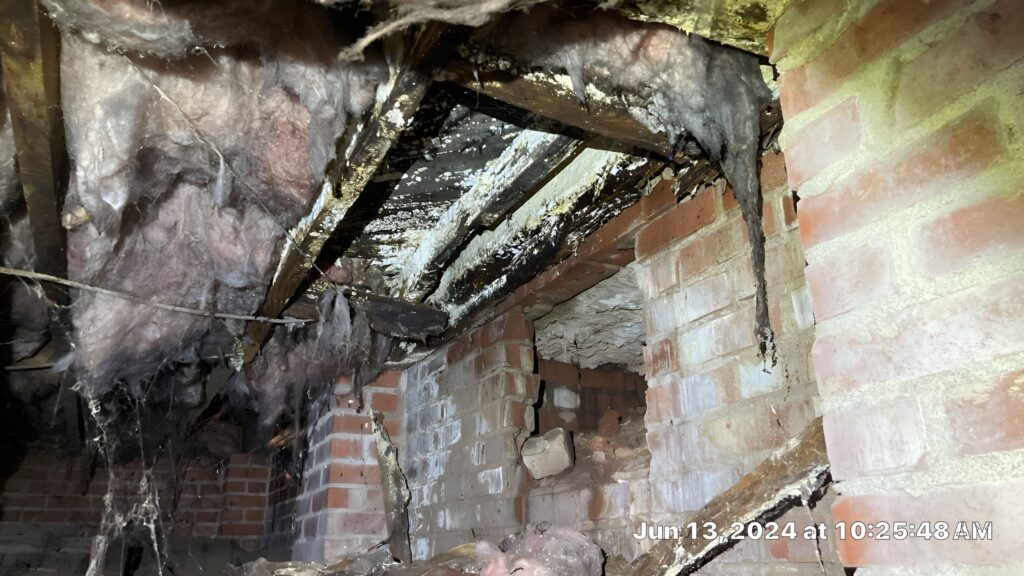
Sometimes, despite your best efforts, things can go wrong in your crawlspace. Maybe you’ve got a moisture problem that’s turned into a full-blown mold issue, or maybe you’ve discovered that pests have been munching on your insulation. Whatever the issue, it’s important to address it quickly before it gets worse.
If you’re dealing with moisture in your crawlspace, the first step is to find the source. It could be a leaky pipe, poor drainage around the foundation, or even high humidity levels. Once you’ve identified the problem, you can take steps to fix it—whether that means repairing a leak, installing a sump pump, or sealing the crawlspace.
Mold in a crawlspace isn’t just an eyesore—it’s a health hazard. If you’ve got mold, it’s important to deal with it immediately. Depending on the extent of the problem, you may be able to clean it up yourself, or you may need to call in a professional. Either way, you’ll need to address the underlying moisture issue to prevent the mold from coming back.
If pests have invaded your crawlspace, it’s time to evict them. Start by sealing up any entry points to prevent them from getting back in. Then, set traps or call in a pest control professional to deal with the intruders. Once the pests are gone, make sure to clean up any damage they’ve caused and take steps to prevent future infestations.
As building techniques and materials continue to evolve, so too do the options for crawlspaces. Today, more homeowners are opting for conditioned or encapsulated crawlspaces that offer better moisture control and energy efficiency. And as awareness of the importance of indoor air quality grows, we can expect to see even more innovations designed to make crawlspaces healthier and more comfortable.
But one thing remains clear—whether you’ve got a simple ventilated crawlspace or a high-tech conditioned space, proper maintenance is key. By taking care of your crawlspace, you’re taking care of your home, protecting your investment, and ensuring a safe and healthy living environment for you and your family.
A crawlspace is the narrow, unfinished space between the ground and your home’s first floor. It elevates your home off the ground, protects it from moisture and pests, and provides access to essential utilities like plumbing and electrical wiring.
Signs of moisture problems in a crawlspace include musty odors, visible mold, damp insulation, and standing water. Regular inspections can help you catch these issues early before they cause serious damage.
The best type of crawlspace for your home depends on your climate and specific needs. Ventilated crawlspaces are common in warmer climates, while unventilated or conditioned crawlspaces are better suited for colder regions where moisture control and energy efficiency are priorities.
If you discover mold in your crawlspace, it’s important to address it immediately. Clean up the mold and fix the underlying moisture problem to prevent it from returning. In severe cases, you may need to call in a professional for mold remediation.
Yes, pests like rodents and termites can cause significant damage to your home if left unchecked. They can chew through insulation, wiring, and even structural components. Regular inspections and pest control measures can help prevent infestations.
It’s a good idea to inspect your crawlspace at least twice a year, or after major weather events. Regular inspections can help you catch and address issues before they become major problems.
Your crawlspace is more than just an empty void beneath your home—it's the foundation of your home's health, safety, and efficiency. Whether you're dealing with moisture problems, pest infestations, or structural instability, Walsh Crawlspace is here to provide a comprehensive solution. From expert inspections to advanced repairs and full crawlspace encapsulation, Walsh Crawlspace offers everything you need to protect your home from the ground up.
With years of experience and a commitment to quality, Walsh Crawlspace ensures that your home’s foundation is as strong as it can be. Our team understands the unique challenges that come with maintaining a crawlspace, and we're equipped with the tools and expertise to address them all. We don't just fix problems; we prevent them, giving you peace of mind that your home is safe, stable, and energy-efficient.
But our commitment doesn't stop there. We've partnered with a network of trusted professionals who share our dedication to excellence. Whether you need specialized mold remediation, advanced pest control, or cutting-edge HVAC solutions, Walsh Crawlspace can connect you with the best in the business. Together, we'll make sure that your crawlspace—and your home—is protected from every angle.
Choose Walsh Crawlspace for a home that's not only standing tall but also standing strong for years to come.